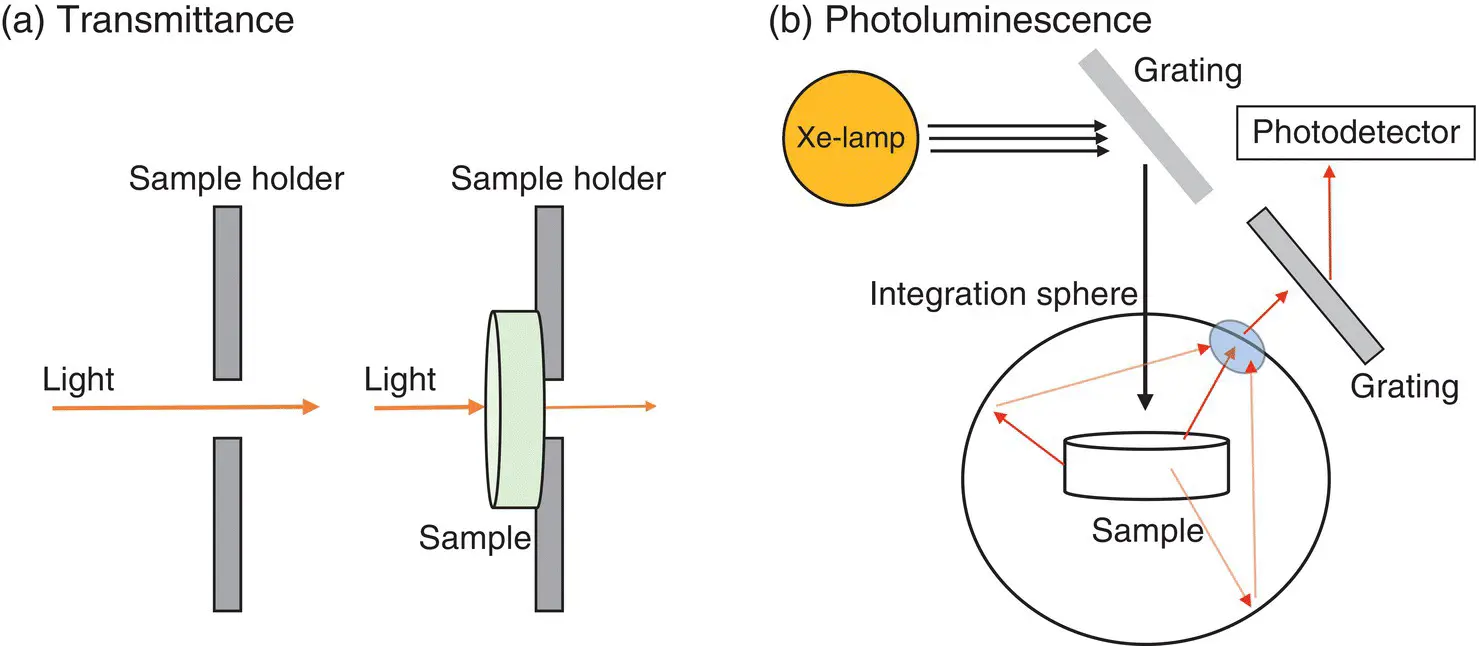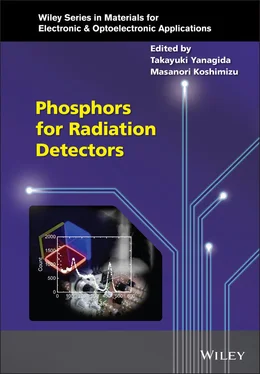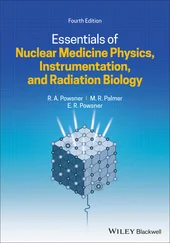Phosphors for Radiation Detectors
Здесь есть возможность читать онлайн «Phosphors for Radiation Detectors» — ознакомительный отрывок электронной книги совершенно бесплатно, а после прочтения отрывка купить полную версию. В некоторых случаях можно слушать аудио, скачать через торрент в формате fb2 и присутствует краткое содержание. Жанр: unrecognised, на английском языке. Описание произведения, (предисловие) а так же отзывы посетителей доступны на портале библиотеки ЛибКат.
- Название:Phosphors for Radiation Detectors
- Автор:
- Жанр:
- Год:неизвестен
- ISBN:нет данных
- Рейтинг книги:3 / 5. Голосов: 1
-
Избранное:Добавить в избранное
- Отзывы:
-
Ваша оценка:
- 60
- 1
- 2
- 3
- 4
- 5
Phosphors for Radiation Detectors: краткое содержание, описание и аннотация
Предлагаем к чтению аннотацию, описание, краткое содержание или предисловие (зависит от того, что написал сам автор книги «Phosphors for Radiation Detectors»). Если вы не нашли необходимую информацию о книге — напишите в комментариях, мы постараемся отыскать её.
Phosphors for Radiation Detectors
Discover a comprehensive overview of luminescence phosphors for radiation detection Phosphors for Radiation Detection,
Phosphors for Radiation Detection
Phosphors for Radiation Detection
Phosphors for Radiation Detectors — читать онлайн ознакомительный отрывок
Ниже представлен текст книги, разбитый по страницам. Система сохранения места последней прочитанной страницы, позволяет с удобством читать онлайн бесплатно книгу «Phosphors for Radiation Detectors», без необходимости каждый раз заново искать на чём Вы остановились. Поставьте закладку, и сможете в любой момент перейти на страницу, на которой закончили чтение.
Интервал:
Закладка:

Figure 1.10 The inverse proportional relationship of Ce differently doped CaF2 single crystals on the plane of OSL intensity as a PL quantum yield (%) and scintillation light yield (ph/5.5 MeV‐α).
Source: The data taken from [86].
This experimental result presents some important problems to conventional understanding of ionizing radiation induced luminescence fields. For example, from the viewpoint of scintillation, the degradation of light yield in higher dopant concentration has been interpreted as concentration quenching. However, Figure 1.10shows that most energy in highly Ce‐doped samples is not converted to thermal loss but to energy storage. Another point is the ε‐value, which is the average energy to generate one electron–hole pair in solid state materials. The most common example is the Si semiconductor detector, and the value of Si is known to be ~3.6 eV (= βE gof Si in conventional understanding based on Section 1.3), which also relates to the theoretical limit of Si solar cell of <30% ~ 1/3.6 ~ 28%. The ε‐value is also defined for scintillators, and has been considered as 10–20 eV. This calculation is based on the scintillation light yield from a pulse height spectrum, and does not take into account storage luminescence. If we consider the ε‐value from the definition, such an estimation in scintillators is not correct, because we do not count the contribution from the carrier storage.
As described above, we think ionizing radiation induced luminescence can be treated as one form of unified physics, and this is why we describe these topics in one book, although they have often been treated as different scientific fields. In this case, the base of the consideration is the energy conservation law, and it strongly assumes the integration of energy in infinite time, which is a standard strategy in astrophysics because the real‐time (time‐derivative) observation is impossible. The author (Yanagida) studied astrophysics, and the consideration depends on the field of the origin. Recently, another author (Koshimizu), whose field of origin is in solid state physics, proposed a real‐time observation on the energy transportation (carrier diffusion) process, which is a key process to understanding S in the equations presented in the previous sections. Such an observation is enabled by transient absorption spectroscopy, i.e., optical absorption spectroscopy as a function of time after excitation by pulsed electron beams. Because the excited states are probed with optical absorption, their real‐time dynamics prior to scintillation can be analyzed. Actually, slow decay of the transient absorption correlates with low scintillation intensity, and is consistent with observation results based on energy conservation. Such transient spectroscopy has long been used with pulsed light, from flash lamps to laser instruments, as excitation sources to elucidate the excited states dynamics. For ionizing radiation, pulsed electron beams can be used as excitation sources. Such a measurement technique based on pulsed electron beams has also long been used to analyze the chemical reaction dynamics in radiation chemistry and is called “pulse radiolysis.” This technique can also be applied to ionizing radiation‐induced luminescence materials and gives information on energy transfer, carrier trapping, and quenching. Thus, to understand S , both energy conservation and temporal analysis‐based experiments have been used recently.
1.6 Common Characterization Techniques of Ionizing Radiation Induced Luminescence Properties
In this section, common characterization techniques for ionizing radiation induced luminescence phenomena are introduced. Transmittance and absorbance measurements are common characterization techniques for phosphors, because we can obtain the absorption bands of materials by this measurement. The PL spectrum is important when considering the emission origin. Figure 1.11a represents a typical methodology to measure transmittance and absorbance. At first, we measure the light transmission intensity of the sample holder, and we define its intensity as 100% transmittance at measured wavelength. Then, we place a sample on the holder, and measure the light transmission intensity of sample + holder. The ratio of the with‐without sample is the transmittance. The transmittance can be understood as Equation (1.26), and if we can plot it in log‐scale corrected by the thickness of the sample, we can draw the absorbance plot. The absorbance is in arbitrary units, and some literature is confused about the absorbance and absorption coefficient (cm −1). It must be understood that if readers need to evaluate the absorption coefficient quantitatively, reflectance must be measured. Without the correction of reflectance, it is impossible physically to determine the absorption coefficient. In some special cases where the reflectance is close to zero, we can treat the absorbance with the rough absorption coefficient. In the case of undoped materials, the wavelength rapidly drops to transmittance to 0% (or rapid increase of absorbance to infinite value), and we can notice the wavelength (energy) as a band‐gap of each material. Some literature use the term “band‐gap” to absorption bands due to dopant in luminescence center doped materials. Such an expression is wrong, at least in solid state physics, although most readers can understand what authors of the paper mean. The transmittance obtained by Figure 1.11a is called in‐line transmittance, and if we use an integration sphere to collect a non‐straight line of light from the sample, we can measure diffuse transmittance. In ionizing radiation detector uses, diffuse transmittance is close to practical conditions, because we generally use reflectors to collect every photon generated by irradiation to photodetectors.

Figure 1.11 Schematic drawing of transmittance (absorption) (a) and PL measurement (b) setups.
Figure 1.11b represents a setup of PL excitation and emission spectra by using the integration sphere. Generally, PL can be observed upon UV–VIS excitation from Xe‐lamp, and we can select which luminescence center (or electron transition) can be induced by selecting the excitation wavelength using a grating. If we use the integration sphere, we can collect all the PL photons. If we define A and I as absorption, which is evaluated by the intensity of excitation light with and without the sample and PL emission intensity, respectively, we can deduce Q = I / A experimentally. The detectors for PL photons are generally grating and photodetector. PL quantum yield is a quantitative value, but generally PL is a qualitative evaluation with an arbitrary unit, since PL intensity depends on the geometry of sample setting. In common PL measurement, we do not use the integration sphere.
Figure 1.12represents a typical experimental configuration of PL decay measurement. The excitation light was emitted from a pulsed light source such as a lamp or an LED. In the lamp, a grating is used to select excitation wavelength, and selected excitation photons are irradiated to the sample. The timing of the excitation is injected as a start signal to time to amplitude converter (TAC). PL photons from the sample are also filtered by the grating to select the target emission, and then collected by the photodetector. The emitted PL photons are reduced to a single photon by filters, pinhole, etc., and this single photon signal is put into the TAC as a stop signal. A timing window is set for the target timing range (e.g., several tens ns for few ns phenomenon), and only the coincidence event within the timing window is recognized as a target signal. The TAC has a function to convert the timing difference of start and stop signals to a pulse signal. After accumulation of pulse signals many times, we can obtain a PL decay curve. Such a technique is called time correlated single photon counting (TCSPC). Generally, we analyze the PL decay curve by an approximation of sum of exponential functions as
Читать дальшеИнтервал:
Закладка:
Похожие книги на «Phosphors for Radiation Detectors»
Представляем Вашему вниманию похожие книги на «Phosphors for Radiation Detectors» списком для выбора. Мы отобрали схожую по названию и смыслу литературу в надежде предоставить читателям больше вариантов отыскать новые, интересные, ещё непрочитанные произведения.
Обсуждение, отзывы о книге «Phosphors for Radiation Detectors» и просто собственные мнения читателей. Оставьте ваши комментарии, напишите, что Вы думаете о произведении, его смысле или главных героях. Укажите что конкретно понравилось, а что нет, и почему Вы так считаете.












